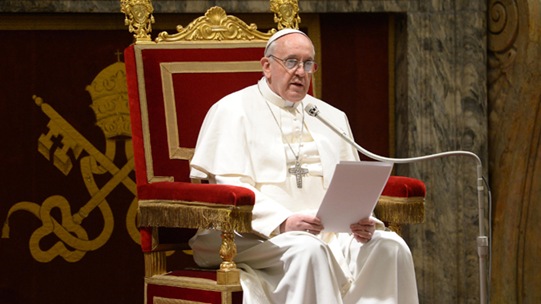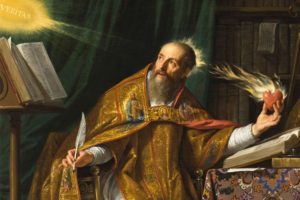The election of Cardinal Bergoglio to the papacy responds to three basic concerns that the conclave felt it necessary to address. These concerns helped to sketch the profile of the new Pope.
The Transitional Task
No one in the curia will ever say the Benedict XVI’s reign was a failure. Yet the impression is that the election of Pope Bergoglio is an implicit admission that the previous papacy achieved less than what was expected, especially as far as the main point of its agenda was concerned, i.e. the relationship with the secular West. After 8 years of Benedict’s reign, the secular West has become more distant from the Church and critical of it. Moreover, the curial Church has given the poorest performance in terms of lack of Christian standards. The Church needed therefore a different Pope.
Between the traditional yet secularized West and the vibrant yet still “young” Global South, the conclave has chosen the classical “via media”, or “middle way”. Pope Bergoglio is an Argentinian born of an Italian family. He is Latin American but with an European background. He embodies the transition between the Western establishment and the Southern fervor. Perhaps the conclave thought that choosing an African Pope or an Asian Pope would have been a too long and unwarranted stretch. On the other hand, sticking to another European Pope would have been too much of a geo-political conservative move that the Church could not bear. Pope Bergoglio is an in-between figure. Different but not so strange. Similar but not a replica.
He is also a transitional figure in terms of his age (76). He is not a “young” Pope with the expectation of a long papacy. Neither is he an “old” Pope with not much time in front of him. His papacy will test the willingness of the Church of Rome to move beyond the stand-still position of recent years, but perhaps it will not have enough time to see changes implemented. The conclave did not commit the Catholic Church to a long papacy (like that of John Paul II), but has instead opted to keep the future in sight, waiting to see how this papacy will unfold. All the while the hierarchy will retain the right to make changes if they deem it necessary.
Pope Bergoglio is presented as an outsider, but in fact he is not. Supported by Cardinal Martini, Bergoglio was the runner up in the 2005 conclave, the one in which Ratzinger became Benedict XVI. He is well known to the cardinals and was apparently considered “reliable” by the conclave. In the top list of candidates prior to the conclave was the Brazilian Scherer, another transitional figure. Scherer, however, was apparently perceived as being too much involved in the politics of the Roman curia to be able to free himself from its maneuvering. Bergoglio is integrated but not organic to the curial world.
The Apologetic Task
The name chosen by the Jesuit Pope is Francis. He mentioned that Francis is a reference to Francis of Assisi (1181-1226). The international press put a lot of stress on this Franciscan symbolism and apparently liked it. Apparently he will combine the Jesuit wit with the emphasis on poverty and frugality. The choice has to do with the willingness to mark an apologetic transition in dealing with the modern world. Ratzinger addressed it by lecturing as a professor, but the West does not like detached, top-down teachers. Ratzinger argued his positions in a very clever and intellectual way, but the West is looking more to celebrities who can ignite imagination. Ratzinger denounced the moral relativism of our day, but the West does not like people who do not practice the “political correctness” of accepting everything. Ratzinger’s strategy ended in a stand-still.
Pope Francis began his papacy with a very different apologetic style. Approachable, normal, ordinary, he likes to be with the people, speaking their language and making his message simple. Ratzinger stressed “faith and reason”, Francis is likely to stress “mercy and simplicity”. Ratzinger addressed the West as theologian, Francis is likely to underline the common humanity of all. The difference is significant.
Will the Church become poor and meek? Will it give priority to a simpler lifestyle? Will it put a stronger emphasis on its spiritual tasks than its secular interests? One thing is to be remembered, Francis of Assisi did not want to reform the whole Church, but wished to receive from the official church the right for his circle of friends to live in poverty. He wanted a niche to pursue his Evangelical ideals, leaving untouched the apparatus of the imperial church. The Church of his time readily gave him what he wanted because she did not feel threatened by him. We will see whether Pope Francis will transition Evangelical poverty from being a niche of the few idealists to being the standard of the worldwide Church. If this is the case, he will have to look at Peter Valdo (1140-1218) who like Francis practiced Evangelical poverty but challenged the official church to do the same. Francis was integrated, Valdo was persecuted.
The Geo-political Task
A final thought on the geo-political significance of the election. Pope Bergoglio comes from a country where, in recent decades, the secular status quo that saw Roman Catholicism being the dominant religion has been shaken by the growth of Evangelical churches and new religious movements of various kinds. This phenomenon designed a new spiritual geography of the country. The same can be said for other Latin American countries. It is interesting that the Catholic Church chose a Pope from Latin America giving him the task of monitoring and presiding over this continental religious border that has become fluid if not weak. The traditional response to the numerical growth of Evangelicals has been labeling them as “sects” and “cults”, but this derogatory approach did not stop millions of people to leave the Catholic Church. Now, the Pope himself will be directly involved in rescuing the continent. Something important is taking place in Latin America and the risk of losing the continent was considered in need of being addressed at the highest level.
Pope Francis is a transition figure. Time will show how Latin American, how curial, how Jesuit, and how Franciscan he will be. In his first short speech in front of the applauding crowd in St. Peter’s square, the most quoted figure was the Virgin Mary to whom he committed himself and his predecessor. His first appointment in his first day of papacy was visiting the Marian basilica of St. Mary Major in Rome to pray to Mary for guidance and help. More of a Jesuit than a Franciscan way of beginning a papacy.
Leonardo De Chirico
leonardo.dechirico@ifeditalia.org
Rome, 18th March 2013





